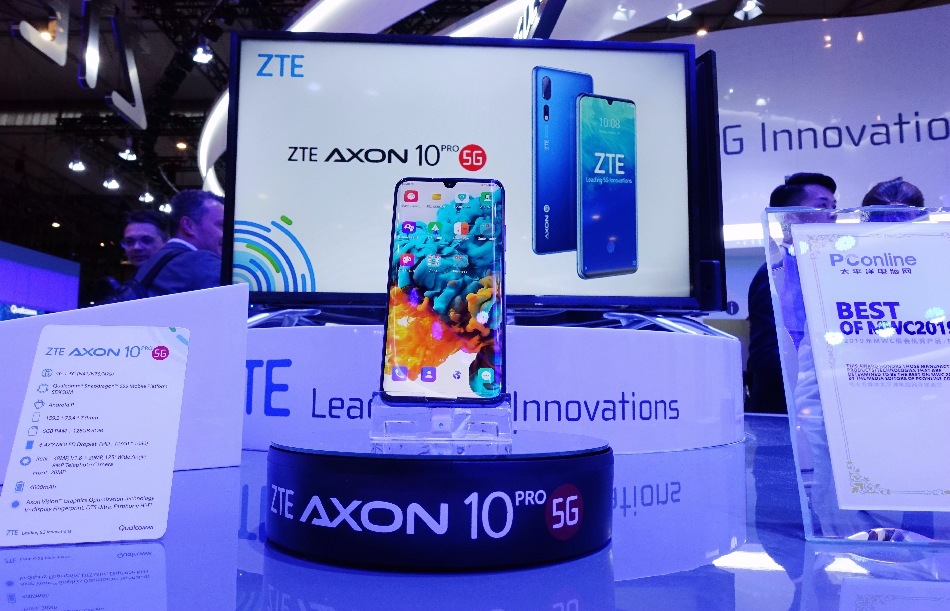
China's ZTE presents its Axon 10 Pro 5G cellphone at Mobile World Congress (MWC 2019) in Barcelona, Spain, Feb. 26, 2019. (Xinhua/Guo Qiuda)
BEIJING, July 24 (Xinhua) -- Chinese telecom giant ZTE Corp has announced that its 5G smartphones were available for reservation in China since Tuesday, China Daily reported Wednesday.
It is the country's first 5G phone model to have its price announced and to have entered the pre-sale phase.
The ZTE Axon 10 Pro 5G is powered by Qualcomm's Snapdragon 855 mobile platform and a 4000mAh capacity battery with wireless charging support.
It is also equipped with a 6.47-inch AMOLED display and featured a triple camera setup which includes a 48-megapixel main sensor, an ultra-wide 20-megapixel lens and a 8-megapixel telephoto lens, according to the paper.
The company said the handset will be put on sale through its official online store as well as e-commerce platforms for 4,999 yuan (about 727 U.S. dollars) each.
Chinese smartphone maker races to gain a foothold in the increasingly competitive 5G smartphone market. Up to now, Chinese smartphone vendors, including Huawei, ZTE, Oppo, Vivo and One Plus have secured the 5G certificate.
Huawei is also scheduled to release its 5G smartphone, the Mate 20X 5G, this Friday.
"Sales of 5G smartphones in China can only take up 1 to 2 percent of the whole market this year. That's about two to three million units. But the launch of ZTE's 5G smartphone is a boost to the company's brand," the paper quoted James Yan, research director at Counterpoint Technology Market Research as saying.
Without sound internet support, there is much more efforts to be made in the fields of the user experience, product strategies and channels of 5G smartphones in China.
According to a research note by market research firm Canalys, Chinese consumers are expected to account for one-third of the world's 5G-enabled handsets within five years.
It also expects 17.5 percent of smartphones shipped in China will be 5G-capable next year and the percentage could rise considerably to 62.7 percent in 2023, said the paper.



